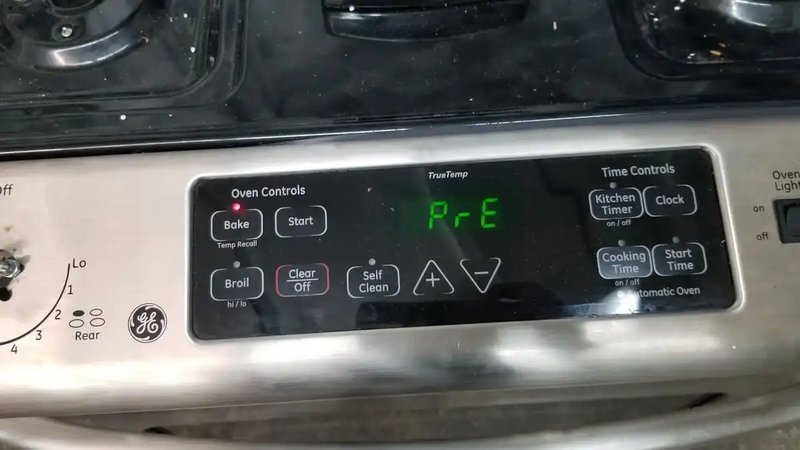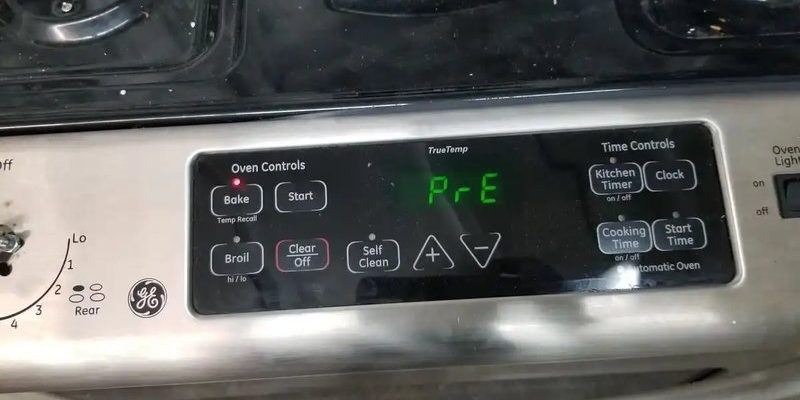
So, what exactly is the F2 error code? In simple terms, it’s your oven’s way of saying, “Hey, there’s something wrong here!” Just like how your car’s dashboard lights up when there’s an issue, your oven does the same thing with error codes. The F2 code is your oven’s way of alerting you to a potential overheating issue. Ignoring this code would be like ignoring a smoke alarm beeping in the middle of the night — it’s not something you want to do. Let’s dive in and explore more about what this error means and how you should handle it.
Understanding the F2 Error Code
Before we get into whether you can ignore this error, it’s important to understand what the F2 code signifies. In GE ovens and ranges, the error code F2 typically indicates that the oven’s temperature sensor detects an excessively high temperature. Imagine putting a pot on the stove and turning the burner to high without adding any ingredients — it would quickly get too hot. In the same way, if the oven’s sensor registers a temperature that’s too high, it will trigger the F2 error to alert you.
Why does this happen? Well, it could be due to several reasons. The temperature sensor itself might be faulty, providing incorrect readings, or there could be an issue with the oven’s control board. In some cases, the oven might actually be overheating, which can be dangerous if left unchecked. It’s like having a thermostat in your house that suddenly goes haywire and cranks the heat up to 100 degrees — not comfortable and potentially damaging.
Now, you might be thinking, “But my oven seems to be working just fine. Can’t I just keep using it?” It might seem like a minor issue if the oven continues to cook your food without problems, but the risks of ignoring this warning could lead to more significant problems down the line, such as permanent damage to your oven or even a potential fire hazard.
Can You Ignore the F2 Error Code?
Here’s the deal: while the oven might still function with the F2 error flashing, ignoring it isn’t advisable. Think about it this way: if you hear a weird noise coming from your car’s engine, you wouldn’t just turn up the radio to drown it out, right? The same logic applies here; ignoring the F2 error could lead to further complications.
In some instances, a simple reset of the oven can clear the code. Try turning off the oven, unplugging it from the power source, and waiting for a minute or two before plugging it back in. This process can occasionally reset the control board and clear any temporary glitches that might be causing the error. However, if the F2 error reappears promptly, it indicates that there’s an underlying issue that needs addressing.
Continuing to use the oven with an active F2 error might result in uneven cooking since the temperature regulation might be off. Moreover, if the sensor is malfunctioning, the oven could genuinely overheat, posing a safety risk. It’s not just about potentially ruining a meal; it’s about protecting your appliance and home from further harm.
Steps to Resolve the F2 Error Code
Okay, so ignoring the F2 error isn’t a good idea. What should you do instead? The first step is to identify whether the issue is with the temperature sensor. You can test this part with a multimeter to see if it’s functioning correctly. If the sensor is faulty, replacing it might resolve the error. This is akin to changing a worn-out battery in a remote control that’s not working — sometimes the simplest solution is the most effective one.
If the temperature sensor seems fine, the control board might be the culprit. This component acts like the brain of your oven, managing functions and receiving input signals. When it malfunctions, it could misinterpret the signals from the sensor. In such cases, you might need a professional technician to inspect and potentially replace the board.
Sometimes, the problem might not be as complex as it seems. Ensuring that your oven is not placed in a cramped space without enough ventilation can also be a factor. Like a person stuck in a small, hot room, an oven needs proper airflow to function well.
Preventing Future Error Codes
Wouldn’t it be nice to prevent this problem from happening again? Here are some tips to keep your GE oven in tip-top shape and avoid future F2 errors. Regular maintenance is key. Just as you’d service your car regularly to keep it running smoothly, doing the same for your oven can help prevent issues.
Keep the oven clean, particularly around the sensor and control board areas. Dirt and grease buildup can affect electrical connections and sensor readings. Think of it like wearing glasses — even the slightest smudge can impair your vision, just like grime can confuse your oven’s components.
Lastly, make sure to use the oven according to the manufacturer’s guidelines. Overloading it or using incorrect settings can strain its components. Similar to how wearing a backpack that’s too heavy for you can cause back pain, overloading your oven can lead to malfunctions.
Final Thoughts
In conclusion, while it might be tempting to ignore that pesky F2 error code on your GE oven, doing so can lead to bigger problems down the road. It’s not just about ensuring your meals are cooked perfectly — it’s about maintaining the safety and longevity of your appliance. By understanding what the F2 error code means and addressing it promptly, you’re taking a proactive step in caring for your oven. So, next time you see that flashing code, remember it’s not just a nuisance — it’s a call to action to keep things running smoothly and safely.
